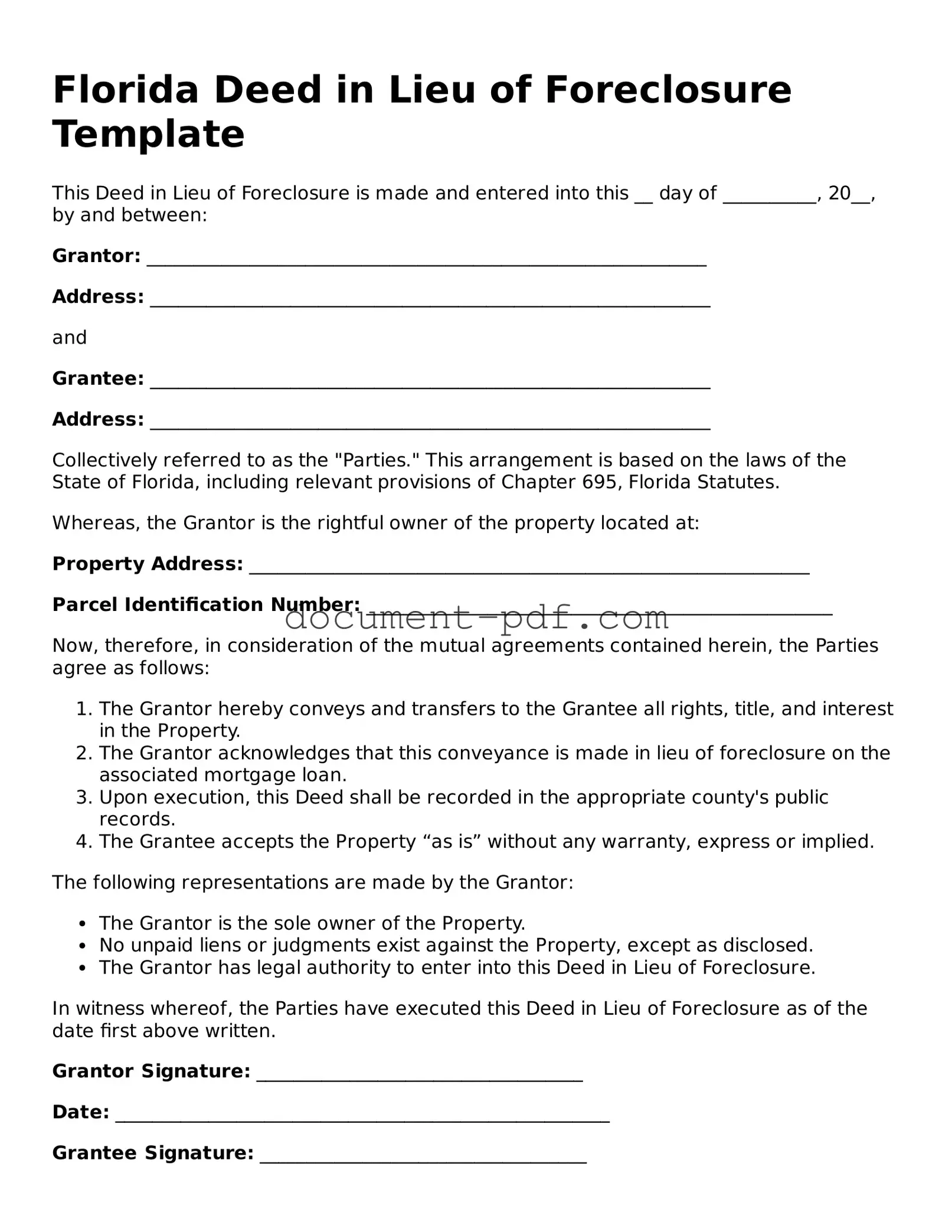Florida Deed in Lieu of Foreclosure Template
This Deed in Lieu of Foreclosure is made and entered into this __ day of __________, 20__, by and between:
Grantor: ____________________________________________________________
Address: ____________________________________________________________
and
Grantee: ____________________________________________________________
Address: ____________________________________________________________
Collectively referred to as the "Parties." This arrangement is based on the laws of the State of Florida, including relevant provisions of Chapter 695, Florida Statutes.
Whereas, the Grantor is the rightful owner of the property located at:
Property Address: ____________________________________________________________
Parcel Identification Number: __________________________________________________
Now, therefore, in consideration of the mutual agreements contained herein, the Parties agree as follows:
- The Grantor hereby conveys and transfers to the Grantee all rights, title, and interest in the Property.
- The Grantor acknowledges that this conveyance is made in lieu of foreclosure on the associated mortgage loan.
- Upon execution, this Deed shall be recorded in the appropriate county's public records.
- The Grantee accepts the Property “as is” without any warranty, express or implied.
The following representations are made by the Grantor:
- The Grantor is the sole owner of the Property.
- No unpaid liens or judgments exist against the Property, except as disclosed.
- The Grantor has legal authority to enter into this Deed in Lieu of Foreclosure.
In witness whereof, the Parties have executed this Deed in Lieu of Foreclosure as of the date first above written.
Grantor Signature: ___________________________________
Date: _____________________________________________________
Grantee Signature: ___________________________________
Date: _____________________________________________________
Witnesses:
Witness Signature 1: ________________________________
Date: _____________________________________________________
Witness Signature 2: ________________________________
Date: _____________________________________________________
This document may need to be notarized to be effective within the jurisdiction.
